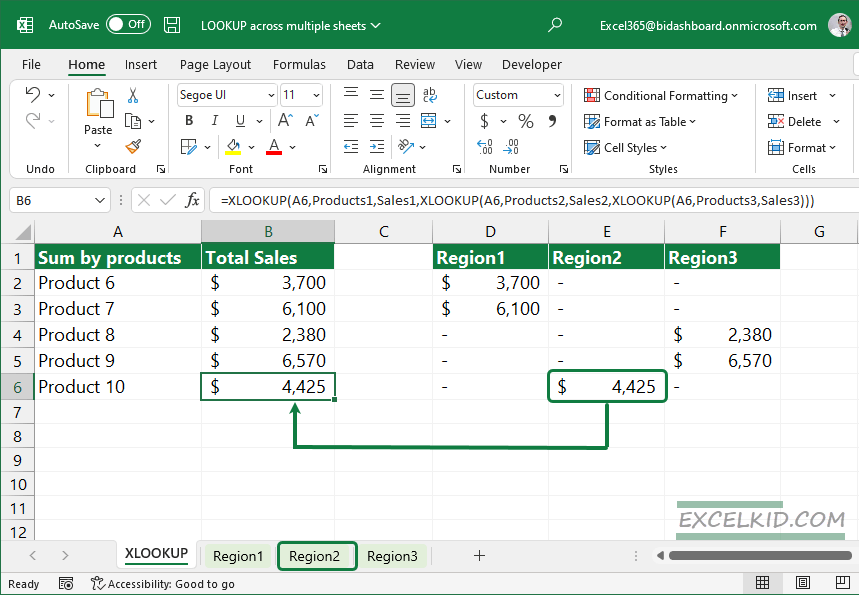Effortlessly Calculate Across 2 Excel Sheets Without Grouping

Excel is a powerhouse for data analysis and management, offering a plethora of features to streamline complex tasks. One such feature is the ability to calculate across multiple sheets without the need for grouping. This capability not only saves time but also enhances the accuracy of your data operations. Here’s how you can master this technique to perform seamless calculations between two Excel sheets.
Understanding the Basics of Excel Functions

Before we delve into cross-sheet calculations, it’s essential to understand the basic functions in Excel. Functions like SUM, AVERAGE, VLOOKUP, and HLOOKUP are fundamental to performing any calculations in Excel.
- SUM: Adds up numbers in a range of cells.
- AVERAGE: Calculates the average of numbers in a range of cells.
- VLOOKUP: Searches for a value in the first column of a table and returns a value in the same row from another column.
- HLOOKUP: Similar to VLOOKUP but searches horizontally.
Linking Sheets for Calculation

When you need to perform calculations involving data from two different sheets, you must reference cells from other sheets. Here’s how to do it:
- Open the workbook containing both sheets you want to work with.
- In the cell where you want the result to appear, type an equals sign (=), which initiates a formula in Excel.
- Type the function you want to use (e.g., SUM).
- Switch to the other sheet by clicking its tab or by typing the sheet name followed by an exclamation mark (Sheet1!A1:A10).
- Continue building your formula as usual. For example:
=SUM(Sheet1!A1:A10, Sheet2!B1:B10)
Advanced Cross-Sheet Calculations

For more complex scenarios, here are some advanced techniques:
- 3D Sum Across Sheets: If you have data spread across multiple sheets but in the same range, you can sum across these sheets:
This formula sums all values in the range A1:A10 on Sheet1, Sheet2, and Sheet3.=SUM(Sheet1:Sheet3!A1:A10) - Using Functions with Multiple Sheets: Combine functions like IF or CHOOSE with cross-sheet references for conditional calculations or data selection from different sheets.
Practical Example: Consolidating Sales Data

Imagine you have sales data for two different months on separate sheets named January and February. You want to find the total sales for both months.
| Step | Description |
|---|---|
| 1. Identify Data | Assume sales figures are in cells A2:A20 for both sheets. |
| 2. Create a Summary Sheet | Add a new sheet for summary calculations. |
| 3. Sum January Sales | |
| 4. Sum February Sales | |
| 5. Total Both Sheets | |

By following these steps, you can quickly consolidate data from different months without the need for manual data transfer or grouping.
🔍 Note: Ensure both sheets are in the same workbook. External references require workbooks to be open.
This methodology allows for dynamic updates; as you update sales data in the January or February sheets, your summary sheet reflects these changes automatically, ensuring your reports are always up-to-date.
Throughout your work in Excel, remember that accurate data referencing and function usage are key. Cross-sheet calculations make your work more efficient, but they also require attention to detail to avoid errors like circular references or misinterpretations.
How do I reference a different sheet in Excel?

+
To reference another sheet, type the sheet name followed by an exclamation mark and then the cell or range reference. For example, =SUM(Sheet2!A1:A10).
Can I use VLOOKUP or HLOOKUP across sheets?

+
Yes, you can use VLOOKUP or HLOOKUP to retrieve data from different sheets. Ensure the lookup table range includes the sheet name.
What if my sheets have spaces or special characters in their names?

+
Use single quotes around the sheet name, like this: =SUM(‘Sheet with space’!A1:A10).



